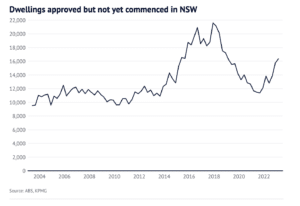How Australia’s new unfair contract regulations help protect small developers
Written by David Lovato – CPC Development Lending Solutions
December 2023
Effective from 9 November 2023, the Australian Consumer Law has been updated to prohibit unfair terms in standard-form contracts. Thanks to these changes, small business owners, including property developers, will be better protected against predatory lending practices.
Understanding the changes
An unfair term is one that:
- Creates a significant imbalance in the parties’ rights and obligations.
- Is not necessary to protect the legitimate interests of the party advantaged by the term.
- Would cause detriment (financial or otherwise) to a small business if it were to be applied or relied upon.
In the context of property development financing, this means that small developers will be shielded from terms that could, for instance, impose excessive interest rates or default charges that are disproportionate to the lender’s actual costs.
Previously, the courts could declare such terms void but could not penalise lenders for including them in contracts.
However, under the new changes, businesses could face penalties up to the greater of:
- $50 million
- Three times the value of the benefit obtained, or
- 30% of the business’s turnover in the relevant period.
Additionally, individuals, including company directors, could also face penalties of up to $2.5 million.
This substantial financial disincentive is expected to encourage lenders to review and amend their standard form contracts to ensure compliance.
The definition of a small business has also been broadened.
Any business with fewer than 100 employees or an annual turnover of less than $10 million is afforded these protections, which apply regardless of the contract’s value. This expanded scope means that more small property developers will benefit from the protections against unfair contract terms.
What this means for you
In practice, this means a more level playing field for small developers seeking loans.
That’s because terms that once might have been buried in the fine print, like unfair interest rates or default charges, could now cost a lender dearly if they’re deemed to be taking advantage of a small business’ lack of bargaining power.
As a result, you can now have greater confidence when entering into loan agreements. Lenders will likely be more cautious and fair in their dealings, knowing that the cost of including unfair terms can be prohibitively high.
Tips for small developers
While these changes offer a new level of protection, it’s still important for you to be vigilant when signing contracts.
This means:
- Reviewing contracts carefully: Always take the time to read and understand the terms of any loan agreement.
- Seeking legal advice: If you’re unsure about any terms, it’s wise to consult with a legal professional.
- Understanding your rights: Familiarise yourself with the Australian Consumer Law and the specific changes regarding unfair contract terms.
Finally, a knowledgeable finance broker who specialises in property development finance, such as Crowd Property Capital, can provide invaluable assistance when trying to get your project funded.
A good broker can help you understand the complexities of loan agreements, guiding you through the terms to ensure they are fair and do not exploit your position as a small developer.
They can also help negotiate better terms and identify the most suitable lenders who adhere to ethical lending practices.
Crowd Property Capital is a property development finance specialist. We help property developers overcome their funding challenges by sourcing loans for land, construction and residual stock. Contact us at [email protected] or fill in this form.











